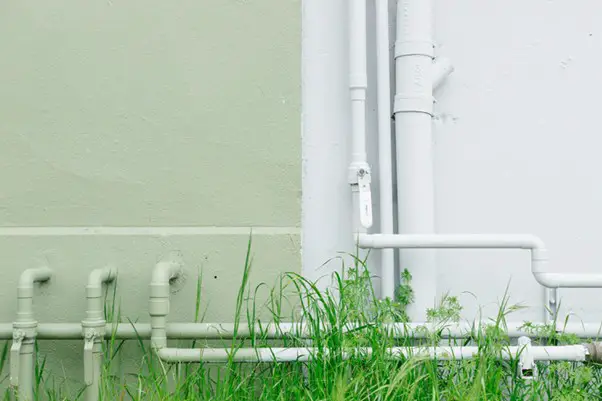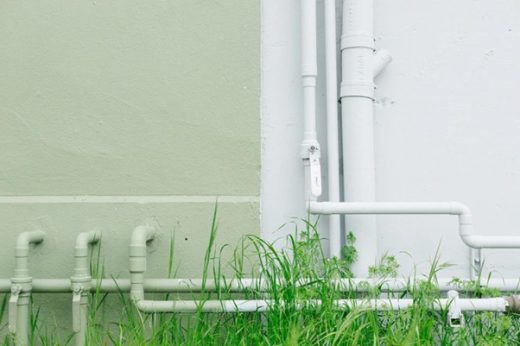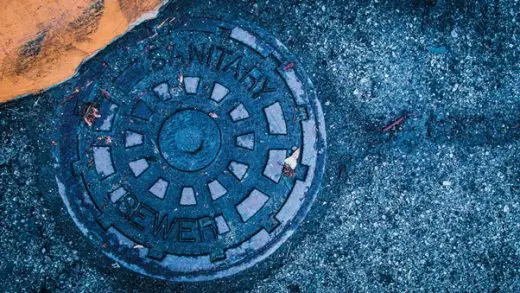Understanding the importance of pipe relining, Building drainage repair tips, New South Wales infrastructure
Understanding The Importance Of Pipe Relining
5 Aug 2021
Pipe relining is gaining popularity to fix broken and blocked pipes and is very quickly becoming a commonly sought-after option. This is largely due to the efficient and cost-effective nature of the techniques used when compared to the more traditional and well-known methods of repairing pipes and drains.
This technique has also been referred to as trenchless pipe repair because it doesn’t require huge amounts of excavation, such as the construction of trenches, to take place in order for the pipes to be accessed. Keep reading to understand the importance of pipe relining for repair in the modern world.
The Importance Of Pipe Relining Procedures
As is the case with most things, the first step in the process is to examine the damaged pipe. This is done with the use of a CCTV camera. This camera can assess what needs to be done without disturbing the surrounding infrastructure. Once the CCTV findings are assessed, In that case, Suppose a decision will be made on whether pipes need to be relined or overhauled completely.
If the pipes are in a condition that can be relined, they are cleaned with a hydro-jet, and the process can begin. The hydro-jet supplies water at high pressure to clean away grease and oils from the pipe. This is an important initial step and needs to be done to ensure that the resin can bond to the pipe. If this is not done, the bond will not be stable and will cause uneven linings in the newly formed pipe.
When the pipe has been sufficiently cleaned, the lining materials can be assembled. The process is as follows:
Step 1 – A liner is placed into a calibration tube. It pushes out the liner when it is time for curation. This tube is usually made of polyester or fiberglass.
Step 2 – Wetting-out. A two-part epoxy resin is mixed. The liner is compressed in an inversion trailer. This ensures that the resin reaches all the fibers within the liner. Once this is complete, the liner is kept in some ice. This prevents it from curing before it is placed in a pipe.
Step 3 – The lining process. The liner is loaded into the inversion tank. The pipe is then filled with epoxy through an access point.
Step 4 – Curring. The resin is cured and left to harden up. The process of relining is sometimes referred to as “cured-in-place.” This name comes from the resin being placed before it is cured. It is placed and then left to air-dry or is slightly sped up with hot water and steam, rather than being curred before being fixed. UV light is used to complete the curing process.
Step 5 – When the resin has completely cured and hardened, it forms the new pipe. A robotic cutter is used to open up all the points along the pipe that were closed up when the resin was put in.
Step 6 – Final checks. The pipe is checked to make sure that the resin has correctly adhered and that there isn’t any wrinkling or open spaces in the new resin body.
How Long Does Pipe Relining Last?
As is the case with many services, this trenchless method differs from provider to provider. It is durable and generally comes with a 10-year installation warranty, which is pretty fair. Josh Boesel of Total Pipe Relining in Sydney, New South Wales, Australia says that some companies even offer a warranty of up to 50 years on their services. This is obviously a more desirable option as it means you won’t have to repair that area for a very, very long time.
Why Should You Choose Pipe Relining?
Traditionally, repairing pipes is an arduous and time-consuming process that causes damage to the surrounding landscape. Other repair processes result in extensive digging to get to pipelines, and when damage occurs to surrounding property, the owners incur most of the expenses. Let’s not even go into detail about the traffic issues it can cause. There are many reasons you should choose to reline pipes, so here are just a few.
1. Less Intrusive Than Traditional Pipe Repairs And Does Not Disrupt Your Normal Routine
One of the major attractions and, as such, a massive benefit if you choose to go ahead with relining your pipes is that there is minimal disturbance and damage to the surrounding area. As you are probably aware, traditional pipe repair and replacement methods all involve a lot of ground excavation.
Since there is little to no digging, traffic – foot traffic and motor traffic – are almost completely unaffected while the repair takes place. This is especially appreciated around malls and in other public places as, when filling is underway, the pipes are accessed via their intended access point – a manhole.
An unfortunate side effect of traditional repair is the cost to return the excavated area to its original glory and aesthetic prior to the ground being disturbed. This can sometimes even extend to your lawn, garden beds, pathways, expensive landscaping, etc.; it can all be destroyed at your own expense. Cleaning up the relentless mess afterward is expensive and time-consuming.
Pipe relining means that you don’t need to worry about your fences or floors the next time you have a blocked or broken drain. Even if more space is needed than the available access point or manhole, it is small and causes minimal disturbance to the landscape and other surroundings.
2. Stops Leaks And Prevents Roots From Getting Into The Pipes
The CCTV camera really helps professionals get to the root of the problem fast. It allows professionals to assess the level of damage as well as identify the actual cause of the damage or blockage. Pipe relining completely seals up the pipe. This means that there is no space for leaks or tree roots to grow into the pipe space; the resin is stronger, far longer-lasting, and is a seamless permanent solution for pipe repairs. It neatly and securely covers all of the cracks and any cracks that might be present in the pipe, providing future protection in some cases.
3. Cost-Effective Pipe Repair Solution
Relatively speaking, trenchless pipe relining is a far cheaper and more cost-effective option. This is, of course, dependent on the level of damage that needs to be taken care of, but it still works out cheaper than having to replace entire portions of a pipe. During more traditional methods of repairing drain and sewer pipes, excavation can cause unplanned issues.
These additional issues include accidentally hitting a pipe and damaging the structural integrity of it, resulting in more of the pipe needing to be patched or replaced entirely. With minimal digging, there is minimal possibility of damage. There is also no longer a necessity for the heavy-duty and expensive machinery needed to do the more extensive excavations, which cuts back costs in several ways. Less need for skilled workers who know how to operate heavy machinery means lower prices, and less disruption means less clean-up cost.
4. Reliable And Durable
The material used to reline pipes is strong, durable, and designed to be long-lasting. Damaged pipes are restored by reinforcing them. A pipe within a pipe is a far stronger option than disintegrating concrete or poly pipes. Due to this, manufacturers can comfortably provide a warranty of 10 years on their products, some even boasting up to a 50-year warranty.
A relined pipe has a longer lifespan than other, more conventional methods of fixing pipes, which makes the investment a very rewarding one. It should be seen as an extremely attractive solution as it does not require troublesome and regular replacing. You can confidently choose to reline as an option and know that it will outlast other repair solutions.
5. Increases Flow Capacity
Traditional pipes made out of clay, concrete, and cast iron have a rough surface area. Calcification deposits attach themselves to the rough surface area of these pipes and cause water flow to deteriorate over time. Epoxy liners eliminate this issue, as they do not have these grooves and are actually very smooth. A smooth surface means that there are fewer places for calcification to form and that potential obstructions and blockages are eliminated. This keeps pipes clean and increases the flow capacity within the pipes.
6. It Is Time-Saving
Getting your pipes relined is way faster than replacing them. The time needed and spent to excavate the soil, remove the old pipes, and replace the entire area before filling in the excavation is completely eliminated. It takes about two hours for a pipe to be relined and fixed.
Depending on whether one of the new dying techniques is used, there are a few quick-drying options available to be chosen from, and the amount of piping that needs to be fixed, this time can be cut operations time down to even less than the already quick two hours. Two hours is no time at all, especially when compared to a project where a pipe is under a road. Rather than an entire road being lifted and the ground below it being excavated to get to a burst pipe, service providers can get to it quickly, conveniently to road users, and deal with the problem in no time at all.
7. Partial Repairs Can Be Done
Traditional methods of the repair require an entire length of pipe to be removed. Patching up the pipe does not work. When you reline pipes, you are able to do patchwork and target the specific areas where it is needed. This saves you countless resources. If the issue is just a hole at one point along the line of the pipe, relining a space of approximately 1 meter can be done to fix it. This means that you save both time and money as you don’t have to pay to fix an entire length of pipe that will encounter the issues mentioned in the points prior to this one.
Does Pipe Relining Pose Any Problems?
This is a really important point to consider with any modern procedure; quicker doesn’t necessarily mean better or safer. An unfortunate side effect of UV-curing light is that it creates a chemical reaction that could release unwanted chemicals into the soil. Fortunately, with this process gaining popularity, there are more and more improvements. Innovation coupled with expert design and workmanship leads to new products that are more sustainable and environmentally friendly. It is the hope that these chemicals will be lessened and eventually eliminated completely.
The resin that is used, on the other hand, has been through rigorous testing and is environmentally friendly. This means that you don’t have to worry about the quality of water and chemical seepage as a result of putting this into pipes in the ground. Relining your pipes is a perfectly environmentally safe option.
Understanding The Importance Of Pipe Relining Guide
If you have pipes that need to be fixed, whether they are persistently blocked toilet drains, broken kitchen pipes, any and all other sorts of damaged pipes, it is highly advisable and recommended to go with the option of relining your pipes. The epoxy resin used can adhere to a large and vast range of different piping materials. This makes it a much more versatile option than anything else.
The reasons to reline your pipes far outweigh the ever-decreasing cons. From being a less intrusive option, a great way to prevent build-up and blockages, a cheaper alternative to replacing an entire line of piping, a more reliable and long-lasting option than other patch-up alternatives, a time-saving alternative to excavating large areas, and an option that is able to target specific areas making it far more versatile than any other options available.
Be sure to contact a registered and trusted professional Sydney plumber. There are some cases where a pipe is too severely damaged, and relining it is not an option. Upon CCTV assessment, a trusted professional will be able to tell you whether they can do something or not. It would be terrible to pay someone to fix your pipes, and then the same issue recurs a few months later.
Comments on this Understanding The Importance Of Pipe Relining article are welcome.
Pipe
Pipes Posts
Using TracPipe to Improve Your Gas Safety
What Are the Main Types of Pipelines
Process of Pipe Relining explained guide
Best Pipe For Your Home Water Supply
Building Articles
Residential Architecture
Comments / photos for the Understanding The Importance Of Pipe Relining page welcome







